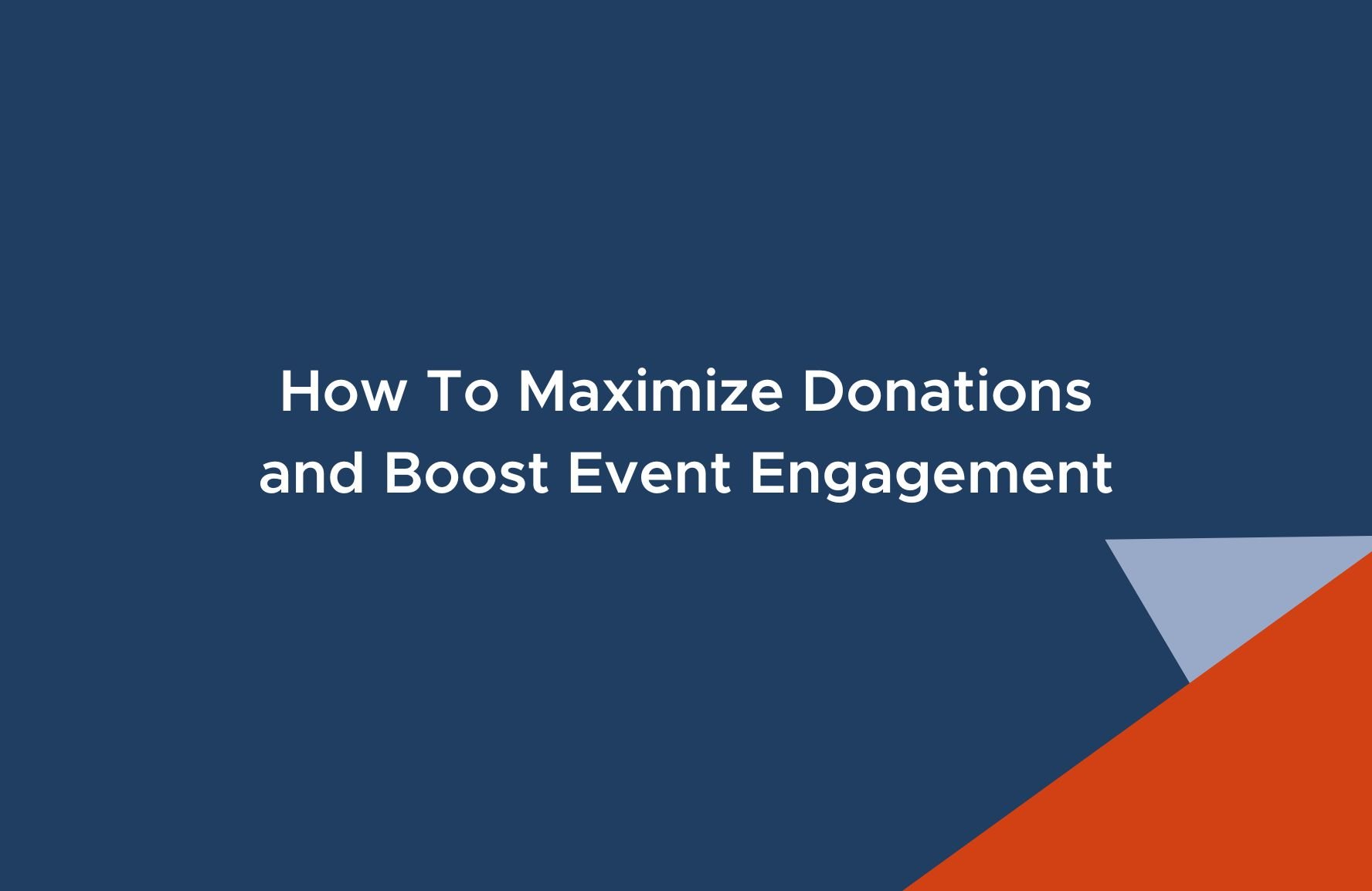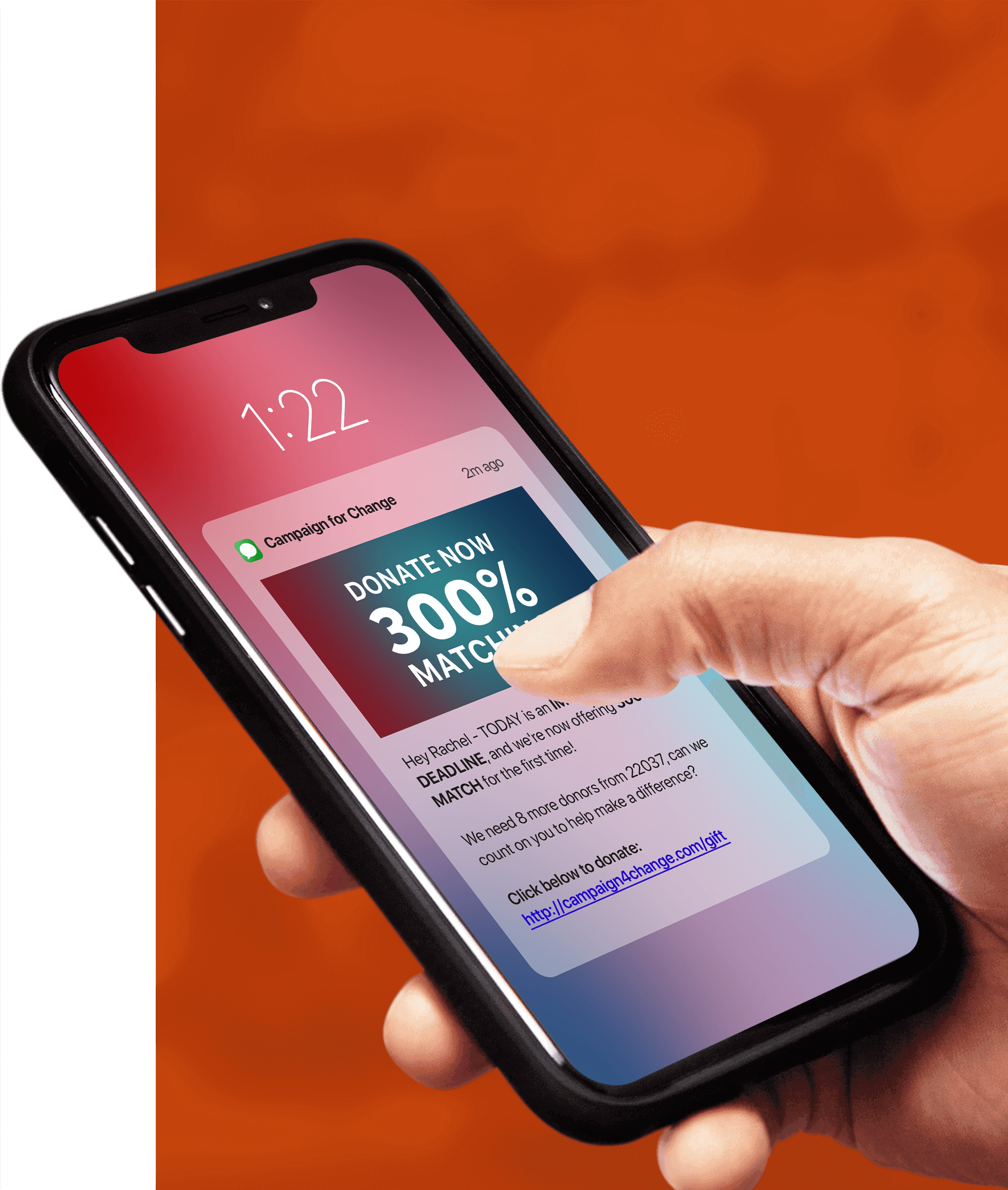Nonprofit direct mail has long been a key part of a multi-channel fundraising strategy for nonprofit organizations across all sectors and industries. From driving traffic online to segmenting campaigns by location and zip code, event invitations and donation thank yous, nonprofit direct mail plays an important role in fundraising. Direct mail provides your supporters with a tangible item that links them to your organization, creating a deeply personal method of communication. Using direct mail in your fundraising strategy can be incredibly effective, especially when combined with other fundraising channels, such as text messaging.
Types of Nonprofit Direct Mail
Fundraisers know there are types of nonprofit direct mail for every donor decision stage:
- appeal letters
- personalized impact reports
- event invitations
- follow up communications
These are just a few of the many ways nonprofit direct mail can be used in a fundraising strategy. As a standalone, the channel may not be an effective mode of fundraising, but when used as a part of a multichannel strategy, it can be an incredibly effective way to increase donations and maximize impact.
Using Nonprofit Direct Mail To Increase Fundraising Across Channels
There are many ways that direct mail can be combined with other fundraising channels to maximize donations. When used with texting, this combination of fundraising channels provides an integrated strategy to enhance donor engagement and boost campaign results.
Below are just a few best practices to use texting and nonprofit direct mail to increase fundraising:
1. Initial Contact via Direct Mail
Start by sending a direct mail piece that introduces your campaign or cause. This can include detailed information that might be too lengthy for a text message, such as stories about the impact of donations, or detailed updates about your organization’s projects.
2. Follow-Up with Text Messages
After sending the direct mail, follow up with a text message. This text can serve as a reminder of the direct mail piece and encourage recipients to take action, such as making a donation through a provided link or attending an event. Texts can be a quick nudge and make it easy for donors to engage immediately.
3. Use Texting for Real-Time Updates
Use SMS to provide real-time updates or urgent messages that complement the information sent via direct mail. For instance, if the direct mail campaign is about a fundraising event, use texting to remind supporters about event dates, times, last-minute changes, or to drive last-minute attendance.
4. Solicit Feedback via Text
After sending a direct mail piece, use texting to gather feedback from recipients. This could be as simple as asking if they received the mail, what they thought about it, or if they have any questions. This not only increases engagement but also provides valuable data on the effectiveness of your direct mail content.
5. Text to Confirm Donations
For donors who have responded to a direct mail call to action by making a pledge (perhaps via a mailed response form), send a text to confirm their donation and express gratitude. This immediate acknowledgment can reinforce their decision to support your cause and enhance donor satisfaction.
6. Link Texts to Online Content
In your text messages, include links to online content or digital platforms that relate to the content of the direct mail. This could be a video that expands on the stories shared in the mail, a signup page for an event, or a digital version of a report or newsletter highlighted in the mail.
7. Integrated Campaigns
Coordinate the timing of direct mail and texting to create a rhythm in your communications. For example, you might send a series of direct mail pieces over several months, with texts sent between mail deliveries to keep the conversation going and maintain engagement.
8. Renewal Reminders
Use a text message to remind donors when it’s time to renew their support if you have an annual campaign introduced through direct mail. A quick text can be an effective reminder and prompt immediate action, especially if it includes a simple way to renew their donation online.
Targeting Your Audience
Both personalization and segmentation are key for targeting your audience, whether you’re using direct mail or another fundraising channel. While direct mail is typically best utilized with older demographics, some sectors have also seen success with younger generations like millenials and GenX.
Segmentation can be used to reach specific audiences and donors by segmenting by:
- geographical location
- household income
- donor status (active or dormant)
- average donation amount
- last donation date
- donation channel preference (online, text message or phone, physical check, etc)
Personalization, such as first name or last donation amount, makes donors feel remembered and valued as a part of your organization. Using both segmentation and personalization in your fundraising strategy, especially when it comes to direct mail can increase engagement and donations.
Integrating Text Messaging with Nonprofit Direct Mail
As mentioned above, integrating direct mail with text messaging can be a great way to increase donations.
By integrating physical mailers with digital platforms, nonprofits can reach a wider audience with targeted communications. Here are a few ways to create action from a nonprofit direct mail piece to a digital platform:
- QR codes: Adding a QR code to a nonprofit’s direct mail piece is a quick and easy call to action to direct your audience online. Whether it be to a mobile-responsive donation page, or to a video testimonial, or a letter from the executive director, nonprofits can create clear calls to action that move easily from a physical mailer to the digital world.
- Powerlinks: Be sure that the text messaging platform your organization uses, allows for powerlinks. Powerlinks are By including a keyword on a direct mail piece that allows users to opt-in to your texting campaign, nonprofits can use texting features like direct links and personalized URL parameters that send users to a donation page and auto-fill donor information. This creates a seamless donation process from a physical direct mailer to a digital donation, driving higher engagement rates and improved response levels.
Wrapping Up
By thoughtfully integrating direct mail with texting, nonprofits can create a multi-dimensional engagement strategy that leverages the strengths of both tactile and immediate communication forms. This approach can help maintain a continuous and dynamic connection with supporters, enhancing both outreach and fundraising efforts. If your nonprofit wants to engage donors with a multi-channel fundraising strategy, using direct mail and texting is a great way to do that. Contact Tatango today to learn more about how texting can work for your organization.

